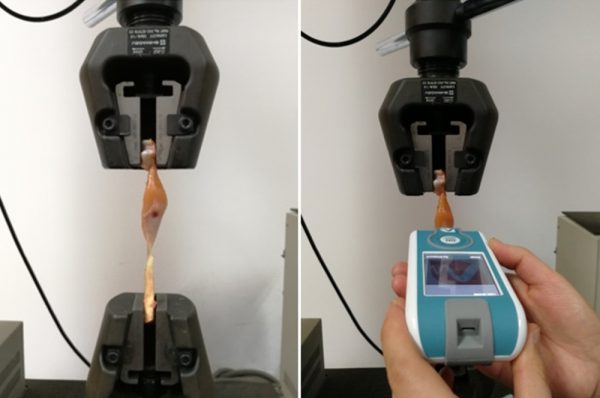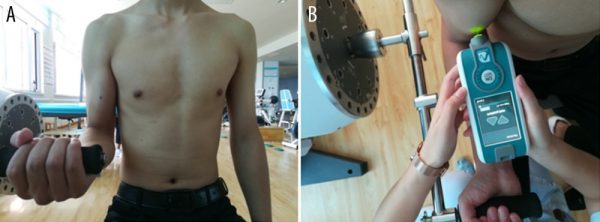Publications

Feasibility of Using a Portable MyotonPRO Device to Quantify the Elastic Properties of Skeletal Muscle
Authors: Ya-Peng Li 1, Chun-Long Liu 2, Zhi-Jie Zhang 1
Affiliations:
- Rehabilitation Therapy Center, Orthopedic Hospital of Henan Province, Luoyang, Henan, PR China
- Clinical College of Acupuncture, Moxibustion and Rehabilitation, Guangzhou University of Chinese Medicine, Guangzhou, Guangdong, PR China
Journal: Medical Science Monitor - January 2022, 28:e934121 (DOI: 10.12659/msm.934121)
-
Field & Applications:
- Reliability
- Validity
Background: The aims of this study were to (1) calculate the correlation between different tensile force levels and corresponding muscle stiffness both in vitro and in vivo; (2) determine whether muscle stiffness assessed using a MyotonPRO myotonometer can be used to accurately estimate muscle activity level; and (3) evaluate the inter-operator reliability of MyotonPRO-based measurement in assessing biceps brachii muscle (BBM) stiffness.
Materials and methods: In Experiment I, muscle stiffness, as measured using the MyotonPRO, was obtained at 0 N, 2 N, 4 N, 6 N, 8 N, and 10 N of applied force on 6 fresh medial gastrocnemius muscle specimens. In Experiment II, 11 healthy subjects were recruited. BBM stiffness, assessed by the same device, was obtained at different tensile force levels, from 0 to 50% of maximal voluntary contraction (MVC). For the reliability test, the score for each subject was quantified by 2 operators (I and II), thrice, at 30-minute intervals on the same day.
Results: A strong correlation was found between the different tensile force levels, which corresponded to muscle stiffness in vitro (r=0.71-0.95, all P<0.05). In vivo, muscle stiffness increased linearly with an increase of the tensile force levels from 0 to 50% of MVC (r=0.99, P=0.00) and there was a significant difference in BBM stiffness among the incremental isometric tasks (F [1.76, 17.60]=91.52, P=0.00). The inter-operator reliability for the measurement of BBM stiffness was good (ICC=0.86).
Conclusions: Our findings indicate that muscle stiffness measured using the MyotonPRO is strongly related to muscle activity level and that the MyotonPRO is a feasible tool for quantifying BBM stiffness as well as for quantifying changes in MVC levels.

Figure 1. Experimental setup. The stiffness measurements of the medial gastrocnemius muscle specimens were obtained using the MyotonPRO.

Figure 2. (A) Subject was sitting with his elbow in 90° flexion and the point for stiffness measurement was marked on the BBM at about one-third of the total muscle length. (B) The stiffness measurements for the BBM were acquired using the MyotonPRO.
Keywords: elasticity, muscle strength, muscle, skeletal
In conclusion, muscle stiffness measured using the MyotonPRO is highly related to muscle activity level. Our findings indicate that the MyotonPRO device is a feasible tool to quantify BBM stiffness as well as changes at the different levels of MVC.


